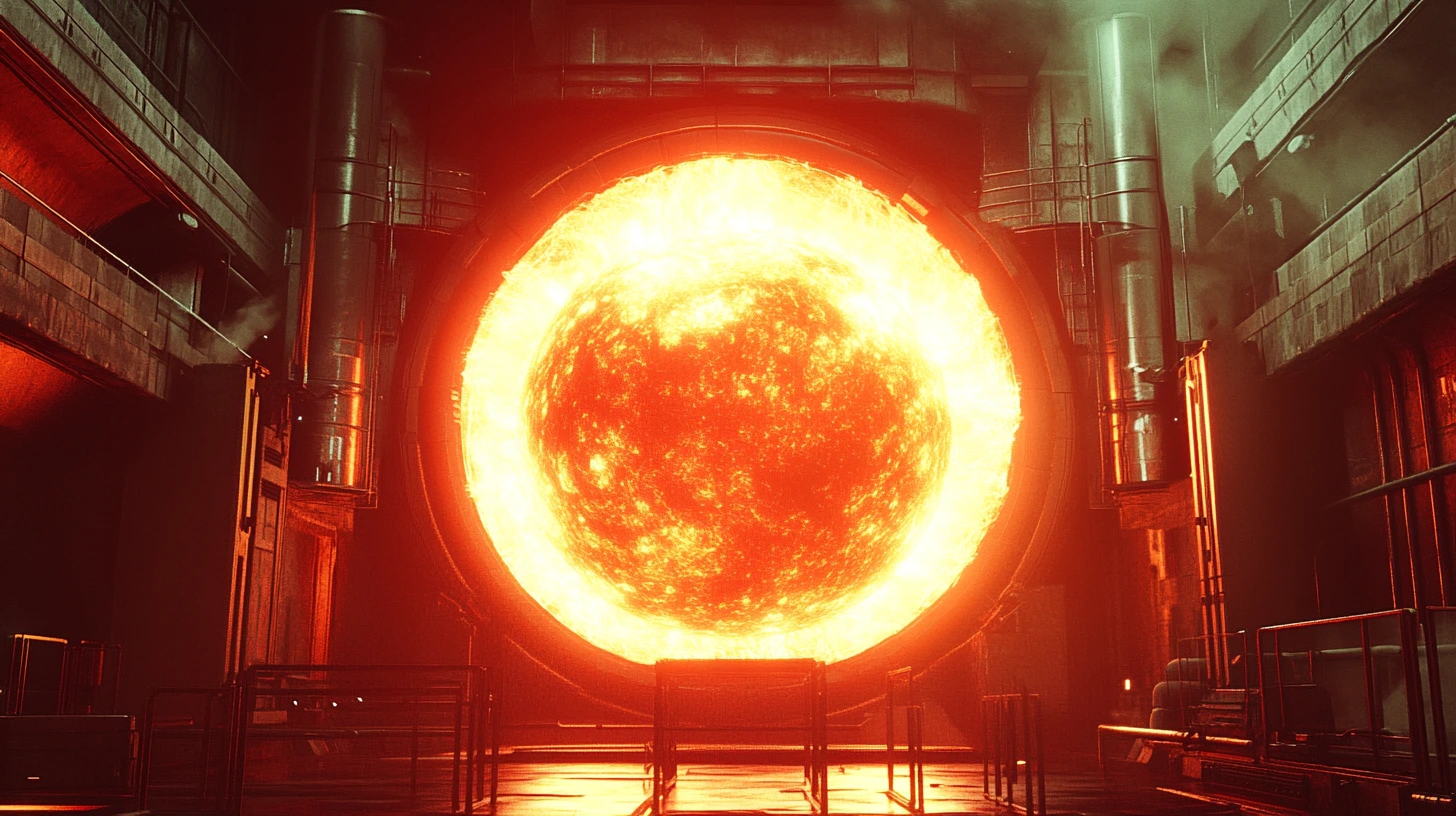TechMile Coin
A Token of Human Progress — Recognizing Breakthroughs in AI, Science & Discovery.
Explore the FutureAbout TechMile Coin
TechMile Coin™ (TMIL) is a visionary cryptocurrency dedicated to celebrating and acknowledging the groundbreaking innovations propelling humanity into the future. Rather than thriving on speculation alone, TMIL emphasizes tangible achievements—advancements in AI, fusion energy, space exploration, and more. Our approach encourages long-term engagement by consistently highlighting and formally recognizing genuine breakthroughs. Each verified milestone enhances the narrative that TMIL stands for meaningful progress, inspiring a community focused on tangible results, not just market speculation.
How It Works
Setting the Stage: Our website begins with a curated list of significant technological milestones. These pre-identified targets give investors and innovators a clear picture of what we consider world-changing goals. Over time, community members can also propose new milestones, ensuring the project evolves with emerging trends and discoveries.
Verification: All milestones are sourced from credible, verifiable events — including peer-reviewed studies, official press releases, and industry announcements. While we may expand how milestones are proposed in the future, each entry must reflect a breakthrough that truly moves humanity forward.
Token Distributions: TechMile currently does not distribute tokens. Our focus is building a shared timeline of verified progress. In the future, we may introduce ways to acknowledge contributors — but for now, TMIL’s utility is enhanced by community belief in real-world advancement, not financial incentives.
Building Engagement: Each recognized accomplishment reinforces TMIL’s identity as a token linked to real progress. While market dynamics may influence its accessibility, these continuous demonstrations of utility encourage a community of participants who view TMIL as more than just another cryptocurrency — it’s a long-term participation in humanity’s advancement, built on real milestones, not promises.
Technological Milestones
Materials Science
Next Milestone:
Room-temperature superconductivity at ambient pressure
Go to milestones
Clean Energy
Next Milestone:
First commercial fusion power plant achieves net electricity to the grid
Go to milestones
Artificial Intelligence
Pioneering the Future

AI isn’t coming. It’s already here — and it’s scaling faster than anything in history.
Artificial intelligence is rapidly moving beyond chatbots and novelty tools into a force that’s rewriting economies, reshaping power structures, and redefining what it means to be human. From autonomous agents to emergent cognition, we’re crossing thresholds we don’t yet fully understand.
These milestones aren’t speculative. They’re measurable — in job displacement, decision-making automation, and our growing reliance on machines for tasks we once considered exclusively human.
This section tracks the inflection points in AI’s evolution — moments where progress isn’t theoretical, it’s irreversible.
Artificial Intelligence Milestones
AI displaces 25% of U.S. jobs
One in four American jobs is replaced or fully automated by AI. This marks the first undeniable shift in the labor force as machine intelligence moves from novelty to necessity.
AI displaces 50% of U.S. jobs
Half the U.S. workforce is now automated. Society enters a tipping point where human labor is no longer the default driver of the economy.
AI displaces 75% of U.S. jobs
The majority of traditional jobs vanish. Human workers become optional across most sectors, forcing a global reckoning on purpose, income, and societal structure.
AI displaces 90% of U.S. jobs
When AI automates the vast majority of jobs, the global economy reaches an unprecedented state of technological reliance. Milestone progress will be verified using comprehensive data from the ILO and other global labor authorities.
Why use U.S. job displacement for the Artificial Intelligence milestones?
We see job displacement as one of the most concrete indicators of AI’s progress — it’s measurable, visible, and economically disruptive. We focus on the U.S. for three key reasons:
Reputable Data: Organizations like the McKinsey Global Institute and U.S. Bureau of Labor Statistics can reliably track and attribute automation-driven job loss.
Capitalist Momentum: The U.S. economy rapidly adopts cost-saving innovations. This makes it a fertile testing ground for AI-driven labor replacement, often years before other countries catch up.
Undeniable Proof: AGI claims can be speculative — but job displacement is tangible. When machines fully replace human roles, it signals a real leap in capability, not just marketing hype.
AI milestones aren’t about potential — they’re about impact. And the disappearance of human labor at scale is one of the clearest signals we can measure.
Materials Science
Redefining Energy’s Potential

Matter is no longer passive. We’re learning to program it.
From superconductors to programmable materials, the field of materials science is exploding with breakthroughs that defy traditional engineering limits. These innovations aren’t just upgrades — they redefine what’s physically possible.
We’re seeing the emergence of materials that levitate, self-heal, conduct without resistance, and respond to fields in real time. It’s not just about strength or weight anymore — it’s about intelligence, adaptability, and scale.
This section highlights the breakthroughs turning raw matter into the engines of the next industrial age.
Materials Science Milestones
Room-temperature superconductivity verified at ambient pressure
Scientists achieve stable superconductivity at room temperature and normal atmospheric pressure — a long-sought milestone. This unlocks the potential for lossless power grids, ultra-efficient maglev transport, and rapid progress in next-gen quantum technologies.
Why use superconductivity for the Materials Science milestones?
We chose room-temperature superconductivity as the benchmark milestone for Materials Science because it’s a transformational achievement with broad, real-world implications:
Historic Significance: Superconductors have long been considered a “holy grail” of materials science. Their success represents a breakthrough that’s been pursued for decades.
Immediate Utility: This milestone unlocks direct advancements in energy transmission, maglev transport, quantum computing, and medical devices — not just theoretical possibilities.
Clear Verification: Superconductivity is binary and measurable — either the material sustains it at ambient pressure and temperature, or it doesn’t. There’s no ambiguity.
While future milestones may include metamaterials, graphene, and programmable matter, superconductivity offers a clear, testable, and civilization-shifting outcome — making it the perfect launch point for tracking progress in materials science.
Space Exploration
Expanding Humanity’s Frontiers

A hundred billion planets. Infinite questions. One species bold enough to leave home.
For most of human history, the night sky was a boundary. Now, it’s a blueprint. With every satellite launch and Mars rover landing, space exploration is evolving from spectacle to infrastructure.
We’re not just visiting space — we’re learning to live there. Permanent lunar bases, interplanetary travel, asteroid mining: these aren’t fantasies, they’re coordinates on a map we’ve just started charting.
This section tracks the milestones that shift our place in the universe — when space is no longer distant, but domestic.
Space Exploration Milestones
Permanent, crewed lunar research base established
A permanent, crewed lunar research base marks humanity’s first long-term presence on another celestial body. From this outpost, groundbreaking research unfolds daily, paving the way for deeper space exploration and unlocking new resources to benefit life on Earth.
First crewed mission to Mars, completed
A crewed mission to Mars marks humanity’s first voyage to another planet, forging a path towards interplanetary travel. This milestone promises unprecedented discoveries and pushes the boundaries of science, technology, and human endurance, inching us closer to becoming a multi-planetary species.
Why use crewed missions for Space Exploration milestones?
We see human-led missions—like a lunar research base or sending a crew to Mars—as the most concrete, verifiable proof of our progress in space. We focus on manned missions because:
Tangible Progress: Probes and robots can do incredible things, but when humans actually land on and operate in off-world environments, it’s an undeniable, physical milestone—like footprints on the Moon.
Technological Readiness: Maintaining life-support systems, shielding crews from radiation, and ensuring safe return all demand next-level engineering. A successful manned mission confirms we’ve solved many of spaceflight’s hardest challenges.
Inspirational Impact: Watching people explore beyond Earth taps into a universal sense of wonder and possibility. Unmanned missions are incredible, but nothing compares to seeing actual human explorers pushing boundaries firsthand.
Wider Spinoffs: Developing safe crewed missions often drives major advancements in materials science, rocket technology, and medicine—innovations that can benefit life on Earth, too.
Relying on crewed mission milestones avoids vague claims of “space readiness.” When astronauts truly live and work on the Moon or Mars, it’s the clearest proof that we’re becoming a multi-planetary species.
Health and Medicine
Engineering a Healthier Future

Not long ago, healing meant hoping. Now it means editing, rebuilding, even reversing time.
We’re entering an era of precision medicine and radical intervention — where we don’t just treat illness, we eliminate its blueprint. Gene editing, AI-designed drugs, lab-grown organs, and biological rejuvenation are no longer sci-fi promises, but active fields reshaping the human experience.
These advances aren’t limited to the rich or lucky. They’re scaling. They’re spreading. And they’re shifting healthcare from reactive to proactive, from costly to curative.
This section tracks the rise of human resilience — where disease loses ground, and health becomes a global constant.
Health and Medicine Milestones
Global Life Expectancy Reaches 75 years
This milestone surpasses the mid-70s mark. Verified by WHO data, it indicates that lower- and middle-income nations have also seen tangible improvements in healthcare access and disease prevention.
Global Life Expectancy Reaches 78 years
Gaining another few years at a global scale suggests sustained reductions in leading causes of death (e.g., cardiovascular disease, certain infections) and broader vaccination or clean water coverage.
Global Life Expectancy Reaches 80 years
Passing 80 on a worldwide average is a transformative leap. It reflects everything from better maternal care to more advanced treatments for chronic illnesses—benefiting billions of people, not just wealthier nations.
Global Life Expectancy Reaches 85 years
Approaching the mid-80s would mean major strides in tackling age-related diseases, from cancer to dementia, and a strong commitment to healthcare equity on a global scale.
Why use global life expectancy as a Health & Medicine milestone?
Global life expectancy is the clearest single indicator of humanity’s health progress — a measurable number that reflects dozens of factors at once. We focus on the global figure, not individual nations, because:
Credible Data: Organizations like the WHO and the UN continuously track life expectancy across regions, providing widely accepted, verifiable statistics.
Holistic Improvement: From childhood vaccination programs to chronic disease management, countless interventions feed into a rising global lifespan—so it’s a simple way to gauge progress on many fronts at once.
Universal Metric: Individual diseases can be misreported or misunderstood. But when life expectancy rises, it means more people everywhere are living longer, healthier lives.
Concrete Milestones: Scientific claims like “we’ve cured X” can be vague. But if global average age climbs to 75, 80, or beyond, that’s undeniable proof of large-scale medical advancement.
Relying on global life expectancy avoids the murkiness of anecdotal claims. When that number rises even a year or two worldwide, it’s unmistakable evidence that innovation has taken root — and quality of life has improved for billions.
Clean Energy
Powering the Next Era

Civilization is wired to its power source. To change our destiny, we change the grid.
The global energy transition is the most important — and underappreciated — revolution of our time. Clean electricity isn’t just about decarbonization; it’s the lever behind everything: water access, manufacturing, internet, transportation, AI, and beyond.
Whether it’s nuclear fusion lighting up a city, or grid-scale batteries storing the sun’s fire, the world is racing toward a future where energy is clean, abundant, and affordable for all.
This section follows the turning points — the moments where energy breakthroughs don’t just make headlines, they reshape how we live.
Clean Energy Milestones
First commercial fusion power plant achieves net electricity to the grid
A fusion facility that consistently supplies more electricity to the public grid than it uses. Verified by independent energy agencies and public utility reports, this breakthrough confirms we’ve entered the fusion age—paving the way for near-limitless clean power.
Why track commercialization as the Clean Energy milestone?
A commercial fusion plant delivering power to the grid is the clearest proof that the future of energy is here — not in the lab, but powering homes, cities, and economies.
Undeniable Evidence: Scientific experiments can claim “net gain” in a lab, but that doesn’t necessarily translate to feeding stable power to a public grid. Once fusion electricity is actually sold and consumed, it’s tangible proof.
Grid Integration: Generating net-positive energy in controlled experiments is an amazing feat, but hooking up to a power grid shows we’ve solved scalability, reliability, and safety issues—key challenges beyond just achieving fusion in bursts.
Regulatory Confirmation: A commercial fusion plant has to meet stringent codes and earn approvals from multiple energy and safety authorities. That level of oversight ensures we’re truly at a point where fusion can be trusted for everyday use.
Economic Impact: When fusion electricity starts competing on the open market, it shifts from a scientific curiosity to a viable energy source. Seeing consumers actually pay for fusion power highlights the technology’s cost-effectiveness and real-world potential.
Grid-connected milestones cut through hype. Once fusion delivers real electricity, continuously and publicly, we’ll know — without question — that the clean energy revolution has begun.
Climate Change
Safeguarding Earth’s Future

The planet will survive climate change. Civilization might not.
We’re not facing a weather problem — we’re facing a systems collapse. From agriculture to migration, health to geopolitics, rising emissions touch every part of modern life.
But the path forward is clear: reach global net-zero emissions, and we stabilize the climate. Miss it, and cascading effects become irreversible.
This section tracks the most critical environmental milestone of all — the moment humanity stops fueling the fire, and starts restoring the balance.
Net global carbon emissions reach zero
Once worldwide CO₂ output is effectively balanced—verified by international climate bodies like the IPCC or IEA—it shows we’ve fully cut or offset the largest driver of climate change, opening the door to a genuinely stable climate.
Why use global CO₂ as our Climate Change milestone?
We see a zeroed-out global carbon footprint as the most concrete, verifiable proof that we’ve turned the tide on climate change. We focus on this milestone because:
All-Inclusive Metric: A handful of nations going net zero is great, but it doesn’t solve the global puzzle. When the entire planet’s net CO₂ hits zero, there’s no hiding behind someone else’s efforts.
Transparent Reporting: Entities like the IPCC track global emissions annually. Once data from multiple regions consistently shows near-zero net carbon output, we can’t help but acknowledge we’ve succeeded.
Real Economic Transition: Dropping to net zero worldwide forces breakthroughs in renewables, energy storage, reforestation, and carbon capture—transforming every sector, not just those in a few eco-conscious locales.
Irrefutable Proof: Vague claims about “lowering emissions” can be overshadowed by ongoing pollution. But at net zero, there’s no question we’ve ended our decades-long reliance on fossil fuels.
Relying on global net emissions sidesteps debates about which country should act first. Once the planet as a whole stops adding more CO₂ than we remove, there’s clear proof that humanity has finally turned the tide on climate change.
Join the Mission
Have a question, a milestone to suggest, or just want to follow along?
Send us a message — we’d love to hear from you.